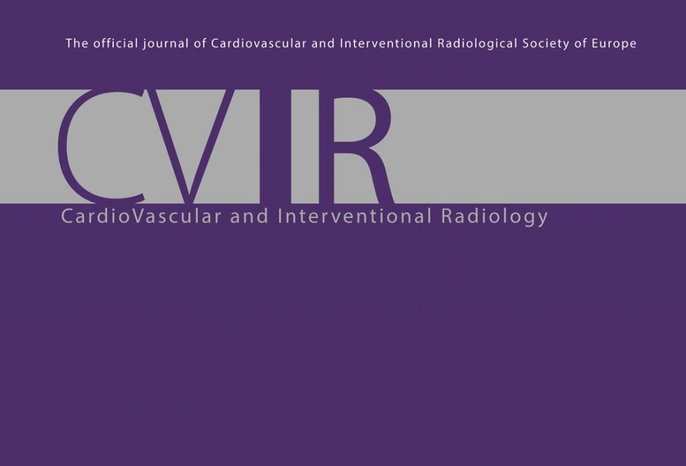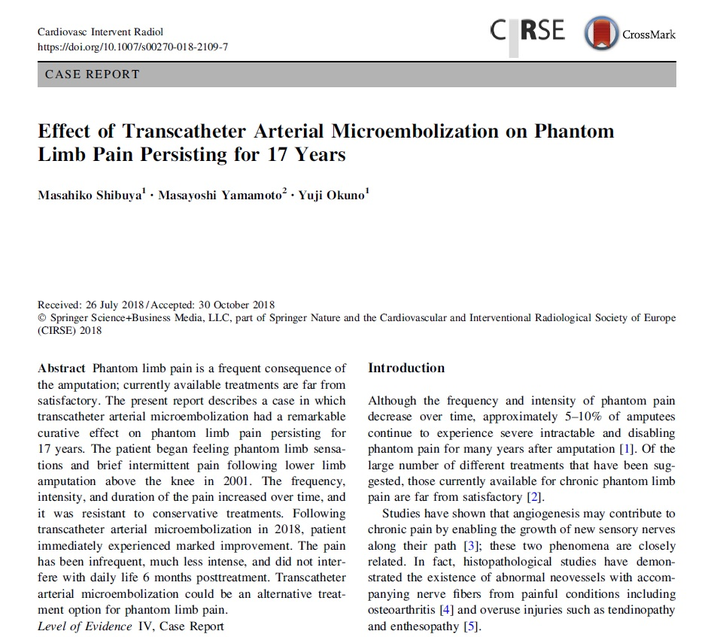Effect of transcatheter arterial microembolization on phantom limb pain persisting for 17 years
Published: December 16th, 2018
Report of Transcatheter Arterial Embolization on Phantom Limb Pain
Title: Effect of Transcatheter Arterial Microembolization on Phantom Limb Pain Persisting for 17 Years
The research paper we would like to introduce here is a transcatheter microembolization report of a patient with phantom limb pain, which is known as a quite difficult-to-treat.
This is a report of the patient’s progress and tells what we have done as well as the result.
This journal is published in the most prestigious European journal of radiology catheterization called CVIR.


The patient on this report is a male in 40’s and he had suffered the phantom limb pain for 17 years.
Phantom limb pain is the phenomenon of pain in a leg or arm that has been amputated for some reason (the phenomenon of feeling pain in a hand or foot that are no longer exist).
There is still no optimal treatment, and it is one of the unsolved problems in the field.
Due to a car accident, this patient had to amputate his right leg below the knee, and about six months after the amputation, he began to experience phantom limb pain. 10 years after the accident, the pain got worse. He repeated nerve block injections, nerve cauterization, mirror therapy, in which the patient is treated with a mirror while looking at the opposite leg, some medications and narcotic tensioning, but he still had strong pain that lasted a couple of hours at night and he could not sleep.
17 years after the pain occurred, he found our TAME treatment of problem blood vessels and came to our clinic. Our doctor found that the patient felt the pain when the doctor pushed his amputation area (the pain called tenderness). The doctor thought the cause of pain is probably because of problem blood vessels in the amputation area, and thus suggested him to take our treatment.
During the treatment, when the doctor injected the medication, the patient felt the same pain. It probably means that the increase in nerves along with problem blood vessels in the amputation area, they caused the pain in his leg.
On the day of the treatment, the patient felt the pain was mush less than before and went back home.
After the treatment, there is not even a single day that he cannot sleep because of the pain. He also explained to us that the pain level goes down to 1 from 10.
2 months after the treatment, the amputation surface was no longer swelling, and his prosthetic leg did not fit. Additionally, six months later, he was able to drive and enjoyed his hobby of paragliding without any pain.
There are many patients who are suffering from phantom limb pain, but there is no effective solution so far.
It is not saying that everyone who suffers from phantom limb pain has problem blood vessels, however, we believe that our treatment can be any help for some people.
We strongly hope that the optimal treatment for pain spreads and as many patients as possible can be treated properly.